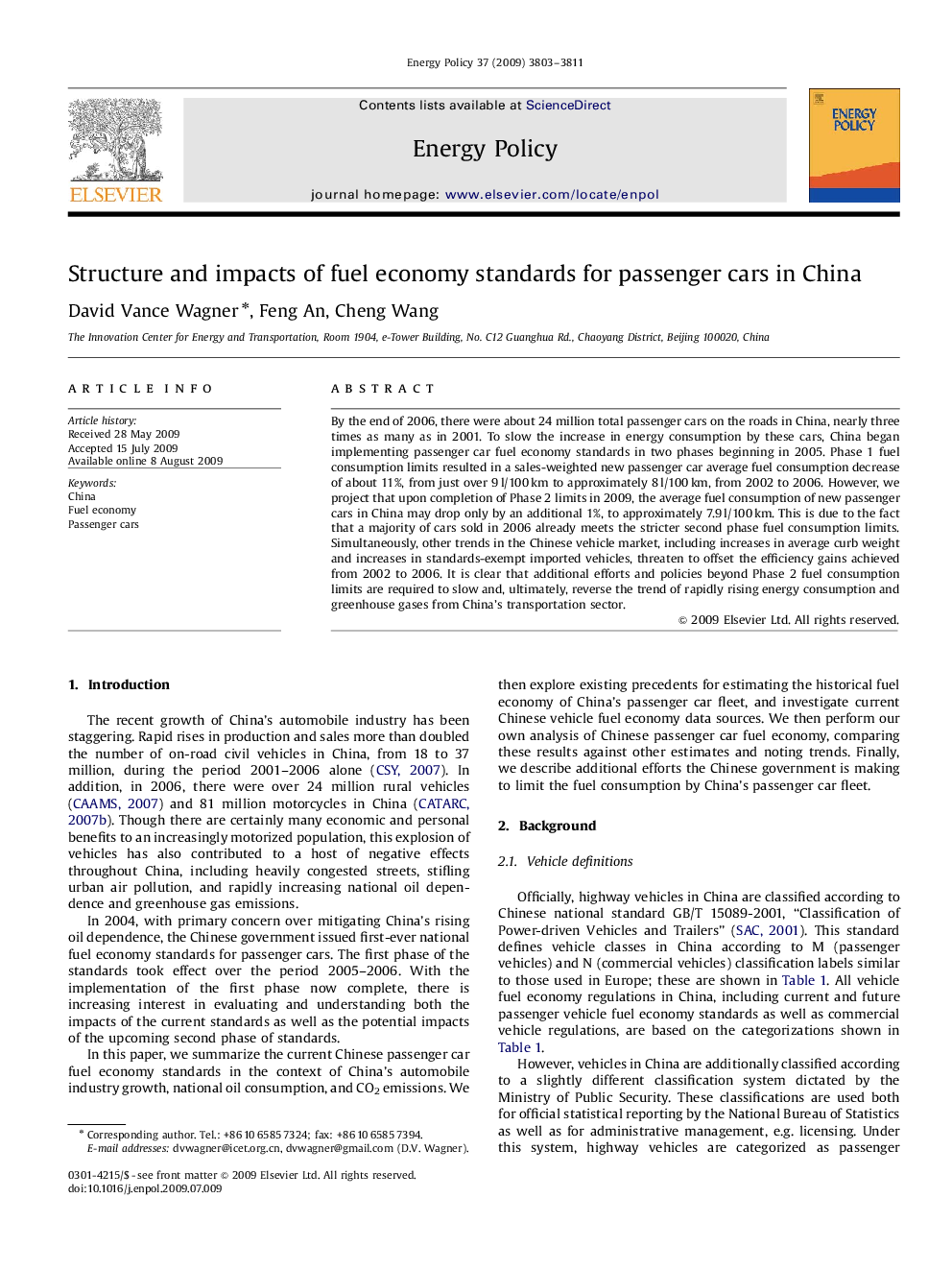| کد مقاله | کد نشریه | سال انتشار | مقاله انگلیسی | نسخه تمام متن |
|---|---|---|---|---|
| 993536 | 936040 | 2009 | 9 صفحه PDF | دانلود رایگان |

By the end of 2006, there were about 24 million total passenger cars on the roads in China, nearly three times as many as in 2001. To slow the increase in energy consumption by these cars, China began implementing passenger car fuel economy standards in two phases beginning in 2005. Phase 1 fuel consumption limits resulted in a sales-weighted new passenger car average fuel consumption decrease of about 11%, from just over 9 l/100 km to approximately 8 l/100 km, from 2002 to 2006. However, we project that upon completion of Phase 2 limits in 2009, the average fuel consumption of new passenger cars in China may drop only by an additional 1%, to approximately 7.9 l/100 km. This is due to the fact that a majority of cars sold in 2006 already meets the stricter second phase fuel consumption limits. Simultaneously, other trends in the Chinese vehicle market, including increases in average curb weight and increases in standards-exempt imported vehicles, threaten to offset the efficiency gains achieved from 2002 to 2006. It is clear that additional efforts and policies beyond Phase 2 fuel consumption limits are required to slow and, ultimately, reverse the trend of rapidly rising energy consumption and greenhouse gases from China's transportation sector.
Journal: Energy Policy - Volume 37, Issue 10, October 2009, Pages 3803–3811